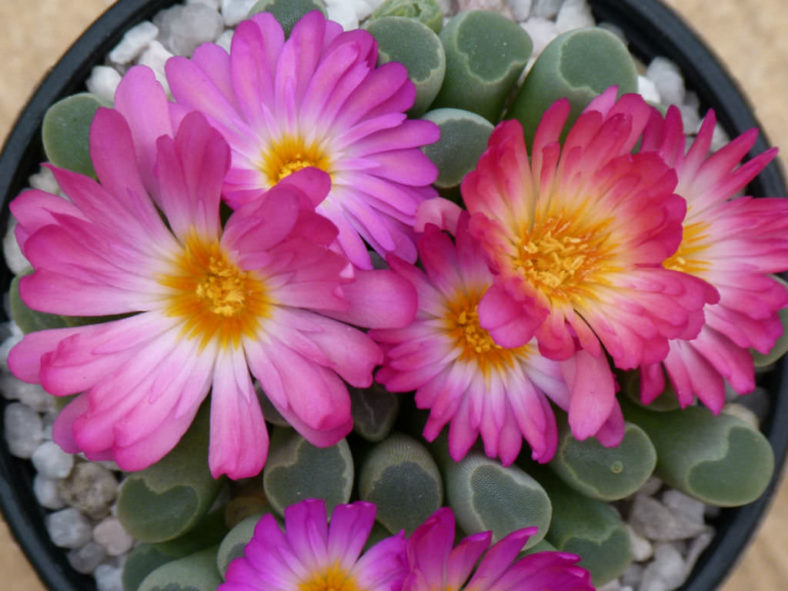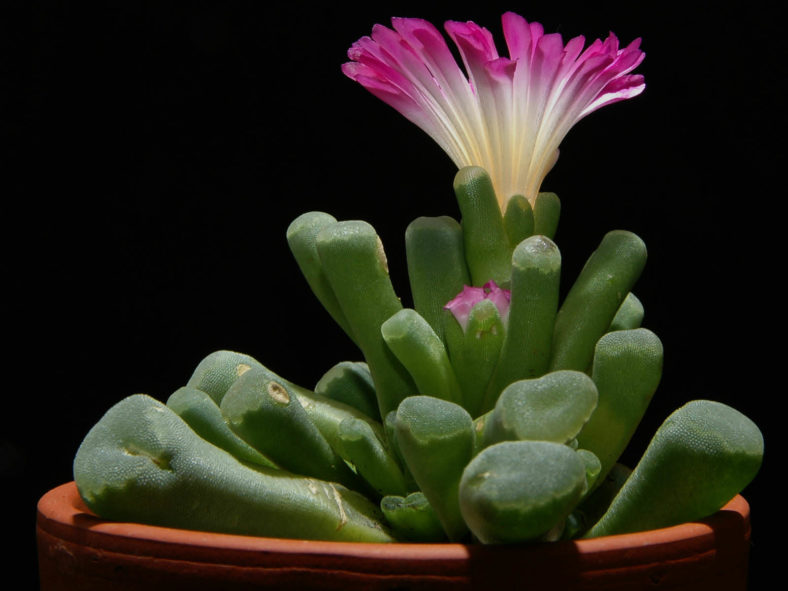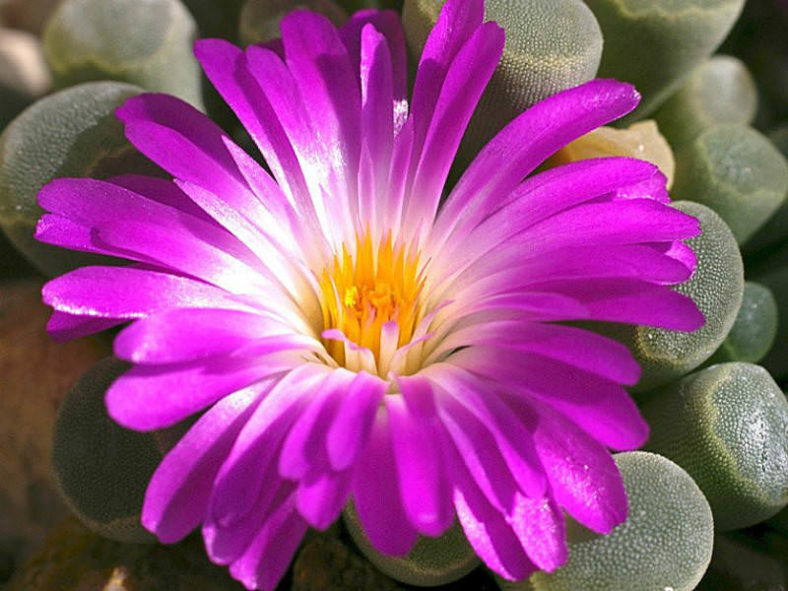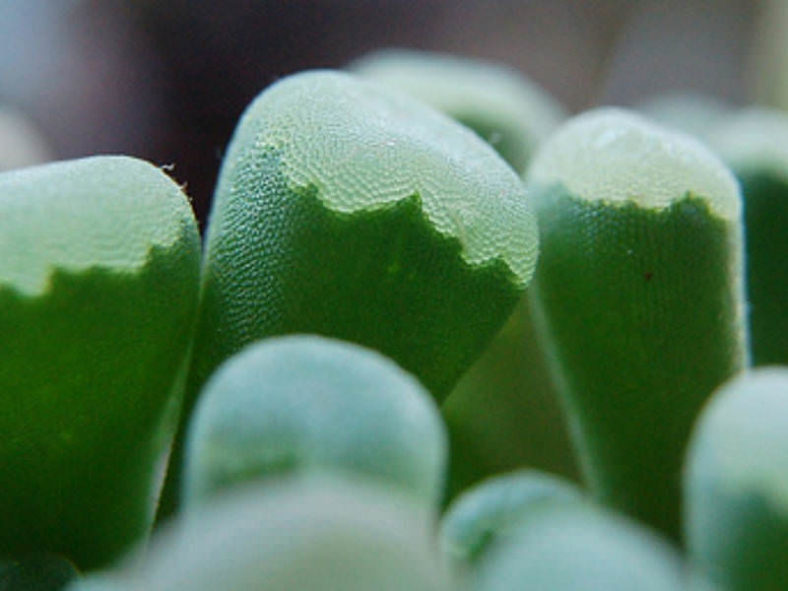Scientific Name
Frithia pulchra N.E.Br.
Common Name(s)
Window Plants, Baby Toes, Fairy Elephant's Feet, Transvaal Fairy Elephant's Feet
Scientific Classification
Family: Aizoaceae
Subfamily: Ruschioideae
Tribe: Ruschieae
Genus: Frithia
Etymology
The specific epithet "pulchra" (pronounced "PUL-kruh") means "beautiful, fair, pretty" and refers to the stunning flowers of this species.
Origin
Frithia pulchra is native to South Africa (Gauteng, North West).
Description
Frithia pulchra is a dwarf succulent that forms clusters of thick, fleshy, grey-green leaves with a translucent window at their tips. It is similar to Fenestraria rhopalophylla, but its leaves are more tubular, and the flowers are bright magenta with a white or light yellow center. The leaves are club-shaped and can grow up to 0.8 inches (2 cm) long and 0.2 inches (0.5 cm) in diameter. They are arranged in clusters and often partially buried.
The beautiful daisy-like flowers appear in late winter and can reach a diameter of 1.4 inches (3.5 cm). The fruits are pretty robust, spongy, yellow to ochre capsules resembling barrels and can grow up to 0.2 inches (0.5 cm) in diameter.

Hardiness
USDA hardiness zones 9b to 11b: from 25°F (-3.9°C) to 50°F (10°C).
How to Grow and Care
Frithias are summer growers and relatively easy to cultivate. They need light, sporadic watering during their winter resting period and moderate sprinkling in summer, as they are rot-prone if kept too moist when the heat turns off their growth cycle. Gritty, well-drained soil containing a small amount of organic material will keep these species happy.
These succulent plants can be grown in pots or out of doors in a rockery. Soak the compost thoroughly, but let it dry out perfectly between waterings. Underwatering can lead to disastrous results, so be generous with water in summer. Nearly all problems occur due to overwatering and poor ventilation, especially when weather conditions are dull and cool or very humid. Keep dry in the winter. They do well in the full blazing sun and with some shade in summer.
Frithias can be grown from seed, sown in a gritty sandstone medium, or propagated vegetatively by division.
Learn more at How to Grow and Care for Frithia.
Links
- Back to genus Frithia
- Succupedia: Browse succulents by Scientific Name, Common Name, Genus, Family, USDA Hardiness Zone, Origin, or cacti by Genus
Photo Gallery
Click on a photo to see a larger version.


